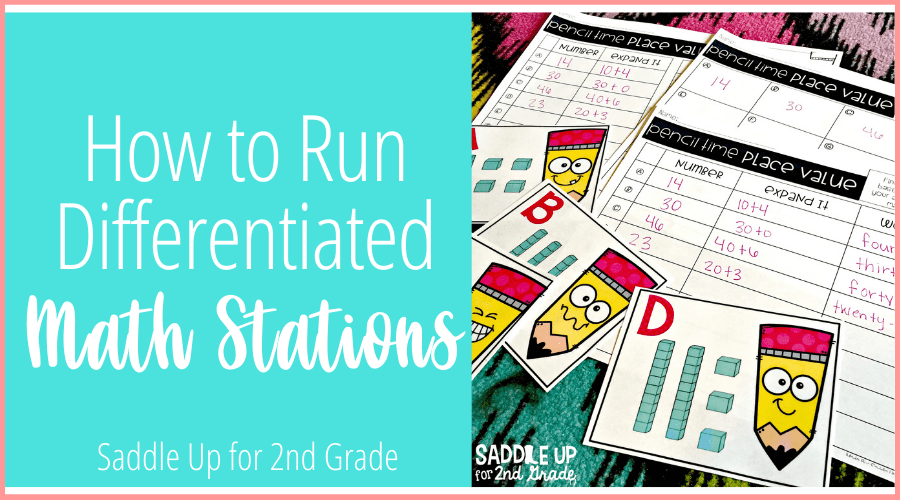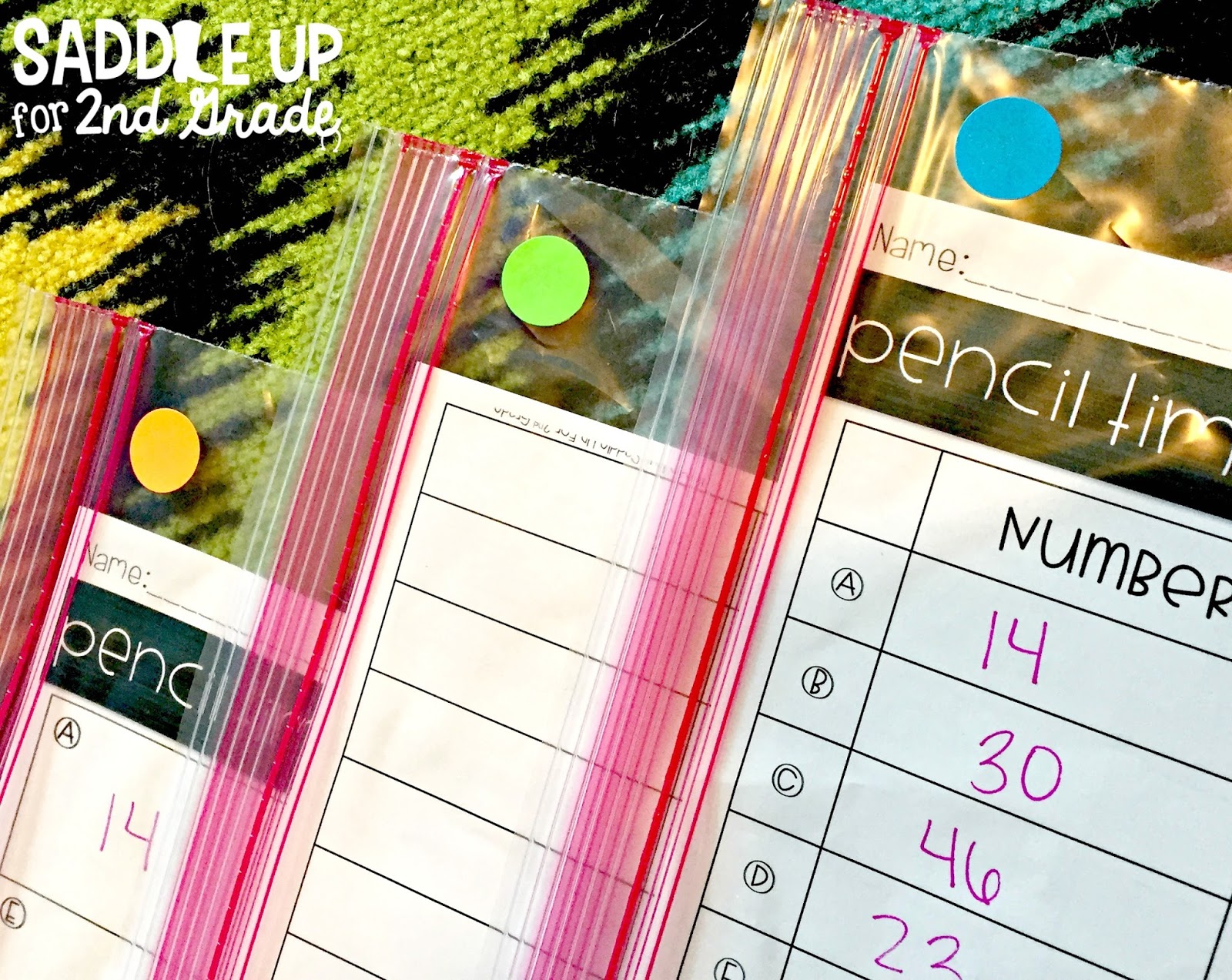

Join me for a FREE, Guided Math workshop to discover how to easily incorporate Guided Math into your current schedule!
Welcome to the 5th and final part of my guided math series! In this blog post, you’ll learn how to create and run differentiated math stations in your classroom that are functional and effective for all of your students. Plus, you’ll find tips and tricks to make them run smoothly in your classroom so you can cut down on the chaos and make the most of your math block.
You can check out any of the other posts in this series by clicking on the links below.
Part 2: How To Set Up Your Guided Math Schedule
Part 3: Establishing Guided Math Procedures
Part 4: Must Have Materials for Math Stations

Differentiation can be easy when done right. Sometimes it takes a little extra prep, but not always. You can find the ways that work for you and stick to those.
My favorite way to differentiate math stations is to use task cards with differentiated recording sheets.
In the example shown below from my 2nd Grade Back to School Math Stations set, I have the exact same set of task cards. However, each group may be working on a different place value skill.
This is an easy way to differentiate without having to prep extra activities. It also makes it simple to differentiate without students noticing they are doing different activities than their peers.
You can also easily differentiate math stations with dice. I love this set of Whiz dice! It comes with over 100 dice with numbers up to 100.
Your lower group may be using regular dice where your average group might be using a 2- digit dice and a 1-digit dice and your higher group using two 2-digit dice.
Here, I am doing the same activity with groups but they are working on 2 different levels.


It’s super important when differentiating math stations to organize them in a way that works for you so that you know exactly which activities are for which students.
I like to organize and sort my math stations using a color system. You can use any 3 colors you’d like to label your stations.
Here are the colors I use to sort my differentiated math stations:

I’m a huge fan of these colored stickers to label each set of answer sheets. Each group knows what color they are assigned to, but they don’t know what each color stands for. That way they don’t feel discouraged or left out in any way. By using these colored stickers, each group of students is using the same set of task cards, but each one is focusing on a different skill.
This activity can be found in my Back to School Math Stations pack or in the Yearly Bundle of Math Stations.
It can be tricky to find different activities that are the same but also differentiated for your students. I have created several sets of differentiated math stations that meet the needs of all students.
The BEST part about these stations, such as these differentiated addition stations, is that all activities include the same activity in 3 different levels!
I think it’s best to run each activity off on a different set of colored paper. You can buy the large packs on Amazon and they usually will last most of the year.
Again, to correspond to the colored stickers, orange is for the lower students, green is average, and blue is high.
In my differentiated addition set, orange (set 1) goes to sums of 10. Green (set 2) goes to sums of 15. Blue (set 3) goes to sums of 20.
As you can see, all students can use the same set of manipulatives or they can use different ones.
In the activity below, they would be using the same manipulatives and recording sheet. However, the numbers are different for all 3 levels.
Here is a look into the differentiated subtraction set. I’m using the same 3 colors and they follow the same rules as the addition set.
Orange (set 1) covers the difference from 10. Green (set 2) the difference from 15. Blue (set 3) the difference from 20.
I hope this post gave you some insight on how to easily set up your groups and differentiate your math stations and small group instruction.
Still need help with differentiation? Make sure to check out my differentiated addition and subtraction station bundles in my TpT store!
You can also check out my Maximize Your Math Block math stations, where you can get a fresh set of easy-to-differentiate, standards-based math stations for every month of the year! Learn more about the benefits of Maximize Your Math Block here!
Ready to get started with guided math today? Fill out the form below to have the FREE GUIDED MATH EBOOK sent straight to you inbox!
Want to save this post for later? Pin the image below.

Math should be fun, not stressful. Ditch the timed math fact tests and replace them with math games that will help your students learn and retain information more effectively.
© Saddle Up for 2nd Grade • Website by KristenDoyle.co

